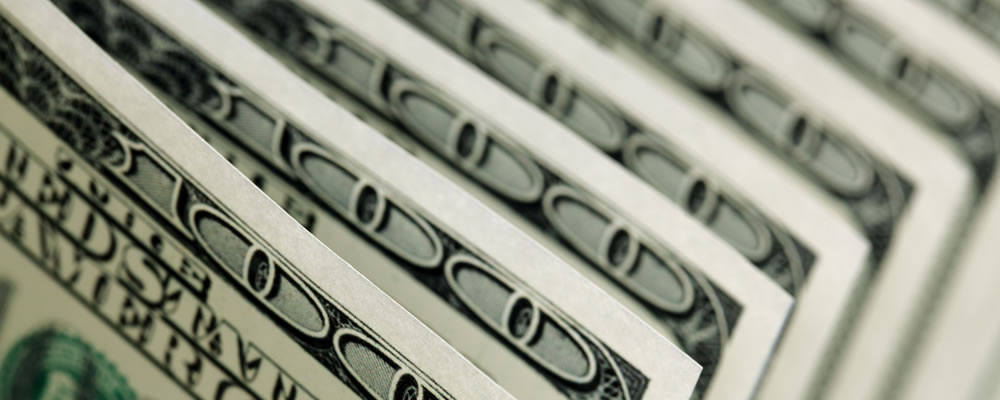With tensions flaring once again within the Eurozone the EUR USD exchange rate has struggled to find any particular traction, given strong expectations of more Fed policy tightening in 2017.
- Worries over Italian banking sector mount after fresh Monte dei Paschi developments – Euro softened as bank revealed to be eating through its cash reserves
- Fed rate hike expectations continued to support US Dollar – Confidence in world’s largest economy remained high
- Forecasts point towards weak US durable goods orders figure – Weaker consumer confidence could dent ‘Greenback’
- Eurozone political tensions to mount in coming year – German and French elections could prompt further Euro weakness
Monte dei Paschi Troubles Fail to Weigh on EUR USD Exchange Rate
Even though reports emerged that Monte dei Paschi’s 5 billion Euro cash call is likely to fail this was not enough to dampen the EUR USD exchange rate. Investors appear confident that the bank will not be allowed to fold and that the Italian government will step in, limiting the impact on the Euro.
As a result the EUR USD exchange rate was trending in the region of 1.04 towards the close of Wednesday’s European session.
(Previously updated at 11:34 on 21/12/16)
With expectations limited for the latest US data could the EUR USD exchange rate find a stronger footing in the coming days?
EUR USD Exchange Rate Failed to Strengthen on Higher German Inflation
Even though German producer prices were found to have strengthened further than forecast on the year in November this was not enough to shore up the Euro US Dollar (EUR USD) exchange rate. While prices picked up 0.1%, pointing towards a higher level of domestic inflationary pressure, the mood towards the single currency (EUR) remained generally muted. Investors remained concerned by the deterioration in relations between Greece and its creditors, with debt relief measures having been suspended in response to an announced Christmas bonus for Greek pensioners.
Confidence in the US Dollar (USD), meanwhile, remained solid thanks to the wide market expectations that the Federal Reserve will raise interest rates multiple times in the coming year. Even though the earlier Services and Composite PMIs failed to paint a particularly encouraging picture of the world’s largest economy, this was not enough to deter demand for the ‘Greenback’. As risk appetite was also generally limited this saw the EUR USD exchange rate trending lower.
Weaker US Durable Goods Orders Could Shore up EUR USD Exchange Rate
The EUR USD exchange rate could nevertheless find a rallying point on Thursday thanks to a large raft of US data, with expectations weak for the latest durable goods orders figure. Forecasts point towards a -4.5% contraction on the month in November; something which would rather undermine the recent impression of robust consumer confidence. However, even a weaker showing here is unlikely to deter the Fed from its more hawkish outlook on monetary policy, maintaining the underlying support for the US Dollar.
Market attention could be more focused on the personal consumption expenditure data for November, which is the Fed’s preferred measure of domestic inflation. Although the major focus of policymakers still lies with the jobs market and wage growth, further signs of rising inflationary pressure could add fresh momentum to the ‘Greenback’. A downside disappointment here, though, would offer the EUR USD exchange rate greater support.
Domestic Worries Forecast to Limit Euro (EUR) Exchange Rate Upside Potential
Eurozone data will be a little more limited in the remainder of the week, with developments in the domestic political landscape likely to have a greater impact on the single currency. Worries over the Italian banking sector could weigh increasingly on the Euro, following reports that Monte dei Paschi is likely to burn through its cash reserves in the next four months. While the Italian government has pledged its willingness to assist the struggling bank, jitters over the integrity of the Eurozone are expected to remain heightened in the near future.
With French and German elections set to potentially rock the boat further in 2017 the appeal of the Euro is likely to remain limited at this juncture. As Petr Krpata of ING noted:
‘The risk premium is already reflected in EUR/USD spot as well as in the options market, with tenors covering the key political risk events pencilling in: (1) higher implied volatility; and (2) a higher volatility premium. Coupled with the potential for another leg of UST yields overshoot in 1Q17, all this points to a downside risk for EUR/USD. We expect the cross to potentially move towards parity in 1H17.’
Current Interbank Exchange Rates
At the time of writing, the Euro US Dollar (EUR USD) exchange rate was trending narrowly at 1.03, while the US Dollar to Euro (USD EUR) pairing was trending lower in the region of 0.96.



